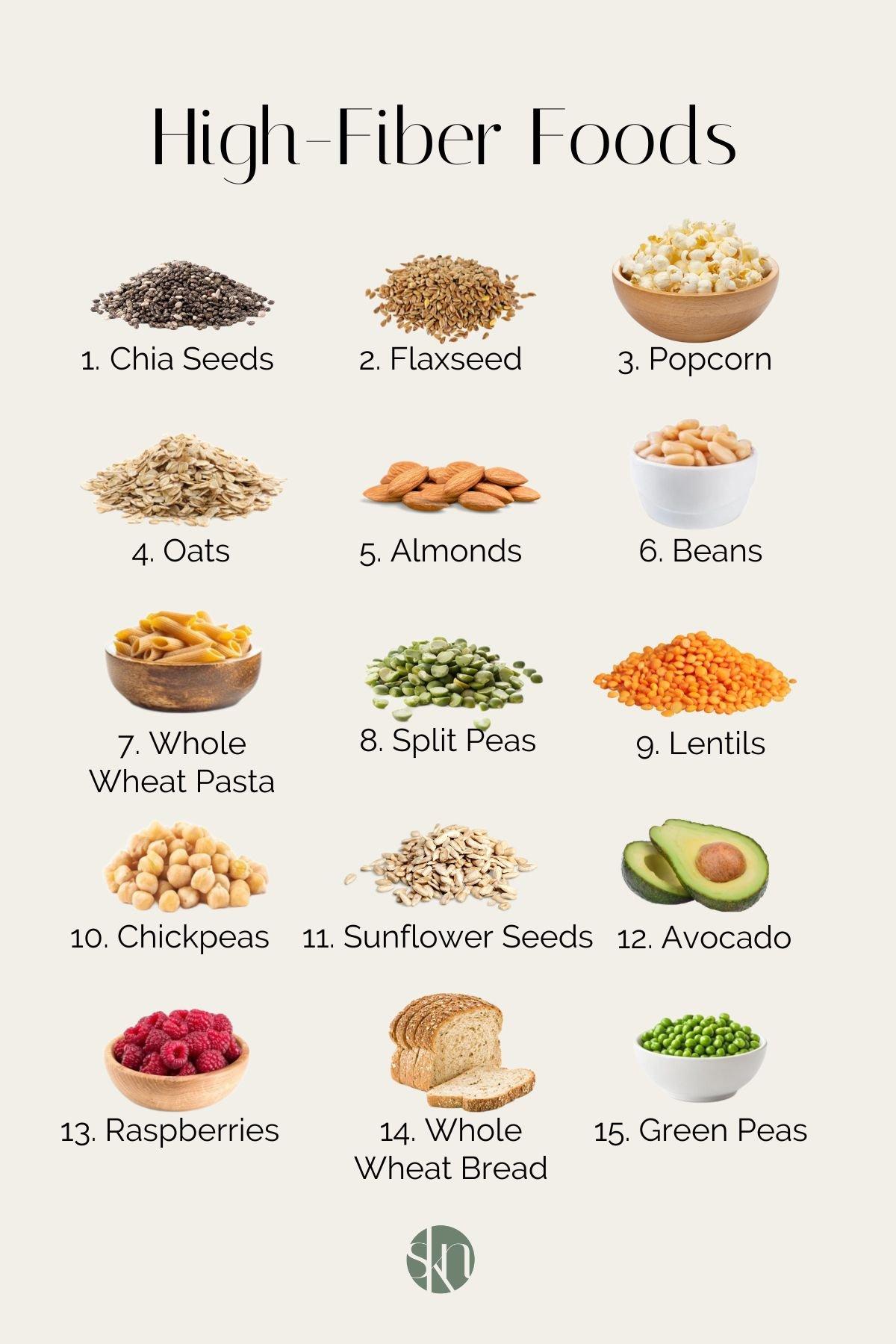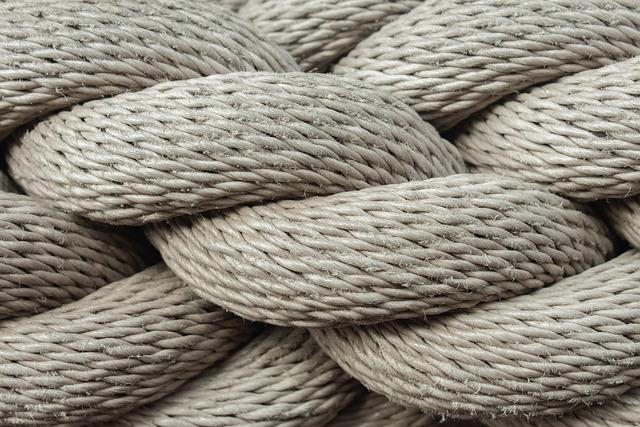Table of Contents
- Exploring the Benefits of a Fiber-Rich Diet for Your Health
- Top Sources of Dietary Fiber You Should Include in Your Meals
- Delicious and Creative Ways to Incorporate More Fiber Into Your Diet
- Understanding Soluble and Insoluble Fiber: What You Need to Know
- Tips for Transitioning to a High-Fiber Lifestyle Without Discomfort
- Q&A
- Insights and Conclusions


Exploring the Benefits of a Fiber-Rich Diet for Your Health
A fiber-rich diet offers a multitude of health benefits that go beyond just aiding digestion. It plays a crucial role in maintaining a healthy weight, as high-fiber foods tend to be more filling, which can reduce overall calorie intake. Incorporating more fiber into your meals can lead to better appetite control, making it easier to fend off cravings and manage portion sizes. Some excellent sources of fiber include:
- Fruits: Apples, pears, and berries
- Vegetables: Broccoli, carrots, and sweet potatoes
- Whole Grains: Oats, quinoa, and whole wheat bread
- Legumes: Beans, lentils, and chickpeas
Another significant advantage of a fiber-rich diet is its positive impact on heart health. Consuming soluble fiber can help lower cholesterol levels, thereby reducing the risk of heart disease. Foods like oats and beans can contribute to this effect, as they bind to cholesterol in the digestive system and promote its excretion. Moreover, fiber assists in regulating blood sugar levels, making it particularly beneficial for those managing diabetes. Here’s a simple table summarizing the types of fiber and their effects on health:
| Type of Fiber | Health Benefits |
|---|---|
| Soluble Fiber | Lowers cholesterol, controls blood sugar |
| Insoluble Fiber | Promotes regularity, aids digestion |
Moreover, a high-fiber diet has been linked to a lower risk of various chronic diseases, including certain types of cancer. Research suggests that fiber may help reduce the risk of colorectal cancer by promoting healthy gut bacteria and supporting regular bowel movements. With its multitude of health benefits, adopting a fiber-rich lifestyle is a flavorful and satisfying way to enhance your overall well-being. Consider experimenting with new recipes to include more fiber-rich foods in your daily diet, ensuring you enjoy diverse and nutritious meals.


Top Sources of Dietary Fiber You Should Include in Your Meals
Including a variety of fiber-rich foods in your meals can significantly improve digestive health and enhance overall well-being. Fruits are an excellent source of dietary fiber, providing not only bulk but also essential vitamins and antioxidants. Some top choices include:
- Apples: A medium apple with skin contains about 4 grams of fiber.
- Bananas: A great on-the-go snack, a medium banana offers around 3 grams of fiber.
- Raspberries: These are fiber powerhouses, with about 8 grams per cup.
- Pears: Especially with the skin on, a medium pear provides around 5-6 grams of fiber.
Vegetables also play a crucial role in a fiber-rich diet, helping to keep you full while nourishing your body. Incorporating the following options can add not only fiber but also color and flavor to your meals:
- Broccoli: This cruciferous vegetable packs up to 5 grams of fiber per cup when cooked.
- Carrots: Crunchy and sweet, 1 medium carrot offers about 1.5 grams of fiber.
- Brussels sprouts: These mini cabbages deliver around 4 grams of fiber per cup.
- Spinach: With its versatile use, one cup of boiled spinach provides about 4 grams of fiber.
Lastly, whole grains should not be overlooked, as they are vital in increasing daily fiber intake. Switching from refined grains to their whole-grain counterparts can make a significant difference. Consider these high-fiber options:
- Quinoa: This ancient grain offers about 5 grams of fiber per cooked cup and is also a complete protein.
- Oats: A wholesome breakfast choice, one cup of cooked oats contains around 4 grams of fiber.
- Brown rice: Compared to white rice, it has about 3.5 grams of fiber per cooked cup.
- Whole-grain bread: Just two slices can provide around 6-8 grams of fiber, making it a filling option.


Delicious and Creative Ways to Incorporate More Fiber Into Your Diet
Incorporating fiber into your meals can be both exciting and satisfying. One delicious option is to make overnight oats, packed not only with fiber but also with flavor. Start by mixing rolled oats with your choice of milk (dairy or plant-based) and a dollop of yogurt for creaminess. To amp up the fiber content, add chia seeds, flaxseeds, or even a handful of berries. These toppings provide not just texture and taste but also deliver essential nutrients that help keep you full and energized throughout the day.
An inventive way to add fiber is to create vegetable-based pizzas. Use a whole wheat or chickpea crust as your base, then load it with a variety of colorful vegetables like spinach, bell peppers, and zucchini. Don’t forget to sprinkle on some high-fiber toppings like avocado or a handful of edamame before baking. For a finishing touch, a sprinkle of nutritional yeast can enhance the flavor while offering a cheese-like quality without the extra fat.
Using legumes in unexpected ways also opens the door to delightful dishes. Consider crafting a hearty lentil soup, where lentils bring a robust flavor and a significant fiber punch. Simply sauté onions, garlic, and carrots, then add vegetable broth, diced tomatoes, and rinsed lentils to simmer. For a twist, mix in spices like cumin and turmeric for added depth. Additionally, try whipping up a black bean dip; blend cooked black beans with garlic, lime juice, and spices for a creamy dip that’s perfect with whole grain crackers or veggie sticks.


Understanding Soluble and Insoluble Fiber: What You Need to Know
Fiber is a vital component of our diet, often categorized into two types: soluble and insoluble. Soluble fiber dissolves in water, forming a gel-like substance. This type of fiber is excellent for managing cholesterol levels and stabilizing blood sugar, making it essential for heart health and diabetes management. Foods that are high in soluble fiber include:
- Oats
- Barley
- Beans and lentils
- Apples
- Citrus fruits
On the other hand, insoluble fiber does not dissolve in water. It adds bulk to the stool and aids in the movement of food through the digestive system, making it crucial for digestive health. Including insoluble fiber in your diet can help prevent constipation and diverticulosis. Some rich sources of insoluble fiber are:
- Whole grains (like whole wheat, brown rice)
- Nuts and seeds
- Vegetables (especially root vegetables)
- Cauliflower and broccoli
- Dark leafy greens (such as spinach)
To effectively reap the health benefits of these fibers, a well-balanced diet should include a mix of both soluble and insoluble fiber. Aiming for 25-30 grams of total fiber intake each day can promote better health outcomes. The following table illustrates the fiber content found in various common foods:
| Food Item | Type of Fiber | Fiber Content (per 100g) |
|---|---|---|
| Oats | Soluble | 10g |
| Black Beans | Both | 8.7g |
| Apples | Soluble | 2.4g |
| Whole Wheat Bread | Insuluble | 6g |
| Broccoli | Insuluble | 2.6g |


Tips for Transitioning to a High-Fiber Lifestyle Without Discomfort
Transitioning to a diet rich in fiber can be rewarding for your digestive health, but it doesn’t come without its challenges. To ease this transition, it’s important to start gradually. Instead of overhauling your entire diet overnight, introduce fiber-rich foods slowly to allow your digestive system to adjust. Aim to add one or two high-fiber items to your daily meals, such as fruits, vegetables, or whole grains, and increase your intake over time. This gentle approach helps to minimize discomfort and keeps your gut happy.
Staying well-hydrated is crucial when incorporating more fiber into your diet. As you consume more fiber, particularly soluble fiber, water helps to move this bulk through your digestive system smoothly. Make it a habit to drink a glass of water with every meal and throughout the day. You might also consider using the following tips to boost your hydration:
- Carry a reusable water bottle to encourage frequent sipping.
- Include high-water-content foods such as cucumbers, oranges, and watermelon.
- Limit caffeine and alcohol, as they can lead to dehydration.
Additionally, involving variety in your fiber sources keeps your meals exciting and further supports your digestive health. Not only does diversity help prevent boredom, but it also ensures a well-rounded intake of nutrients. Aim to include:
| Food Group | Examples | Fiber Content (per serving) |
|---|---|---|
| Fruits | Apples, Bananas, Berries | 3-5 grams |
| Vegetables | Broccoli, Carrots, Spinach | 4-6 grams |
| Whole Grains | Oats, Quinoa, Brown Rice | 5-8 grams |
| Legumes | Chickpeas, Lentils, Black Beans | 7-10 grams |
By being patient and attentive to your body’s needs, your transition to a fiber-rich lifestyle can lead to improved digestive health and overall well-being. Embrace this journey and watch as your meals transform into nourishing experiences that bolster your vitality.
Q&A
Q&A: All About Fiber-Rich Foods
Q1: What is dietary fiber, and why is it important for our health? A1: Dietary fiber is a type of carbohydrate found in plant foods that our bodies can’t digest. It plays a crucial role in maintaining digestive health, regulating blood sugar levels, and lowering cholesterol. Additionally, a fiber-rich diet can help you feel full longer, which can aid in weight management.Q2: How much fiber should I be consuming each day? A2: The recommended daily intake of fiber varies by age and gender. Generally, adult women should aim for about 25 grams per day, while men should strive for 38 grams. However, individual needs may differ based on lifestyle and health objectives.
Q3: What are some common food sources high in fiber? A3: A variety of foods are excellent sources of fiber. Legumes such as lentils and chickpeas, whole grains like quinoa and oatmeal, fruits including apples and pears, and vegetables such as broccoli and carrots are all fiber-rich choices. Nuts and seeds, like chia seeds and almonds, also contribute significantly to your daily intake.
Q4: Are there different types of dietary fiber, and how do they benefit us? A4: Yes, there are two main types of dietary fiber: soluble and insoluble. Soluble fiber dissolves in water and can help lower cholesterol and regulate blood sugar. Foods rich in soluble fiber include oats, beans, and citrus fruits. Insoluble fiber, found in whole grains and vegetables, adds bulk to stool and aids in digestive movement.
Q5: How can I incorporate more fiber into my diet? A5: Increasing your fiber intake can be both enjoyable and simple. Start by adding a serving of vegetables to your meals, choosing whole grain products over refined ones, snacking on fruits and nuts, and incorporating legumes into your recipes. Gradually increase your fiber intake to allow your digestive system to adjust, and be sure to drink plenty of water.
Q6: Can consuming too much fiber have negative effects? A6: While fiber has many benefits, consuming too much too quickly can lead to gastrointestinal discomfort, including bloating and gas. It’s best to increase your fiber intake gradually and listen to your body’s cues. If you experience significant discomfort, consider consulting a healthcare professional.
Q7: Are there any fiber-rich foods that are particularly beneficial for specific health conditions? A7: Absolutely! For instance, oat bran and barley are great for heart health due to their soluble fiber content, which can help regulate cholesterol. If you’re managing diabetes, foods like legumes can help stabilize blood sugar levels. Always consider your individual health needs and consult a healthcare provider for tailored advice.
Q8: What role does fiber play in weight management? A8: Fiber-rich foods tend to be more filling, which can help control appetite and reduce snacking between meals. Including these foods in your diet can support a healthy weight in the long run by promoting a greater feeling of fullness and reducing overall calorie intake.
With these insights into fiber-rich foods, you can make informed choices to enhance your diet and enjoy the myriad health benefits they offer.




0 Comments